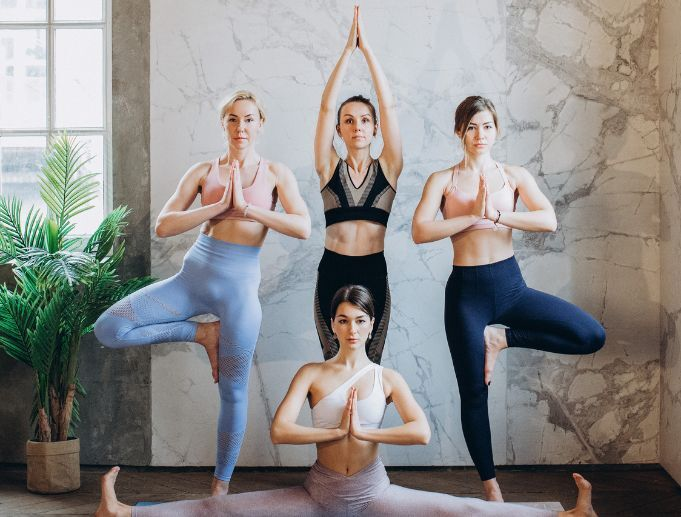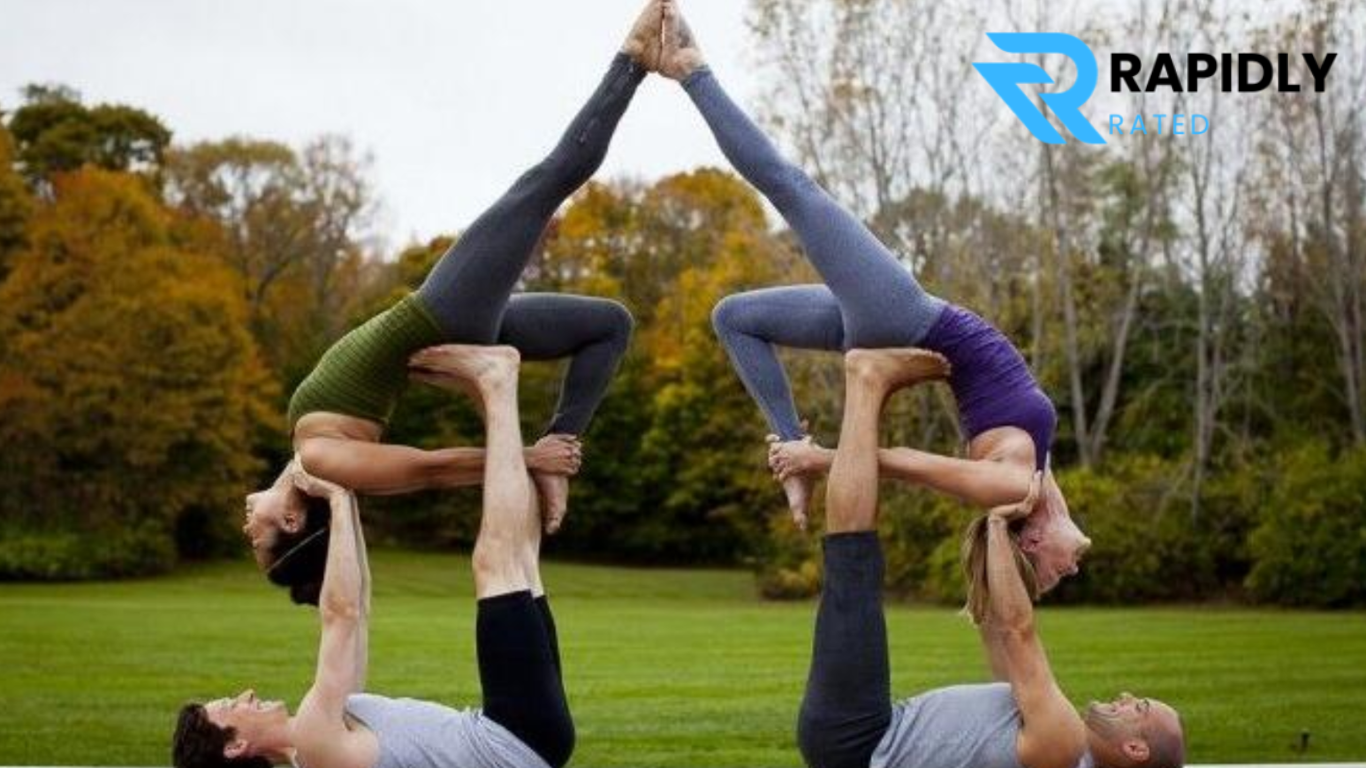The practice of advanced 4-person yoga requires advanced strength alongside flexible body movements and unwavering trust to complete complex synchronized postures. The practice deepens relationships among participants by developing physical capabilities along with mental development through kinetic postures.
Benefits of 4-Person Yoga
- Physical Benefits: Builds strength, flexibility, and coordination.
- Mental Benefits: Enhances focus, mindfulness, and stress relief.
- Social Benefits: Strengthens communication, trust, and teamwork.
Safety Guidelines
Practice 4-person attunement always under trained guidance or with a person who watches. Begin each workout by doing a complete warm-up as you exercise on properly padded areas. You must keep lines of communication open while handling potential risks because advanced poses can lead to injuries.
Preparation and Prerequisites
Building strong core muscles helps along with perfecting your balance capabilities and cultivating flexibility in your body. Individual practice of yoga poses and simple partner formations needs completion before attempting four-person complex combinations.
10 Advanced 4-Person Yoga Poses

1. Pyramid Pose
This traditional yoga pose creates a balanced multi-person structure through teamwork while preserving strength across all levels of participants who form the stepped pyramid formation.
Formation:
- Two participants kneel shoulder-width apart to form the base.
- The second layer balances on the thighs or shoulders of the base participants.
- The top participant climbs up carefully and balances at the apex.
2. Flying Plank Pose
This strength-building pose depends on core power and mutual faith when two base participants sustain the suspended plank formation of two flyers.
Formation:
- Two participants form a stable plank position side by side.
- Flyers position their feet on the bases’ backs and clasp hands for support.
- Adjust positions for balance and alignment.
3. Star Formation Pose
Participants arrange themselves to create beautiful symmetrical star-shapes that represent both unity with each other in addition to strength as a group.
Formation:
- Bases lie flat on their backs, feet touching.
- Flyers grip the bases’ hands and balance on their legs.
- Ensure even weight distribution to maintain symmetry.
4. Chair Stack Pose
A methodical structure made up of layers supports stability while participants stay seated.
Formation:
- Two performers face each other while maintaining their knees slightly bent.
- The layer two participants position themselves on their thighs.
- Characteristically the leader selects the second platform to maintain equilibrium.
5. Tower Pose
The formation demands precise physical strength because participants use upward movement to become a cumulative human structure.
Formation:
- The base participant stands firmly.
- The second climbs onto their shoulders.
- The third and fourth participants ascend in sequence, balancing carefully.
6. Plank Circle Pose
This holds strength as participants merge their bodies into a ring of locked plank positions.
Formation:
- Each participant creates one plank which they use to form a circular shape.
- Stable postures develop when people connect their feet and hands.
- Hold the pose, maintaining alignment.
7. Backbend Support Pose
The beam-shaped backbend enhances flexibility through stretching while enhancing chest intricacies.
Formation:
- Two bases kneel and provide support with their arms.
- Flyers lean back into a connected backbend, holding onto the bases’ hands.
- Adjust for comfort and balance.
8. Double Flying Bird Pose
Pair participants align themselves to create two mirrored flying bird movements at once.
Formation:
- Bases lie flat with legs raised.
- Flyers balance on the feet of their respective bases.
- Coordinate movements for symmetry.
9. Wheel Pose
The group forms a circular wheel through backbending movements involving hand and feet interlock.
Formation:
- All people need to come together into a wheel-shaped structure.
- Participants should form a ring community through hand and foot interlocking techniques.
- Maintain alignment and flexibility.
10. Diamond Pose
Through its diamond formation this pose aims to show equilibrium and interconnectedness.
Formation:
- Two bases kneel and connect their hands or feet.
- Flyers balance atop the bases, linking limbs to form a diamond.
- Ensure proper alignment for stability.
Tips for Success
Practice requires both patience and regular dedicated effort to achieve success. Develop group trust so you can learn from mistakes which enhances your technique and coordination abilities.
Conclusion
Through advanced 4-person yoga participants progress physically and mentally while strengthening their bonds with each other and experiencing challenging creative poses focused on balancing physical and mental state.
Frequently Asked Questions (FAQs)
1. Is 4-person yoga suitable for beginners?
No, it’s best for those with prior yoga experience.
2. What equipment is needed?
Yoga mats, padded surfaces, and grip aids.
3. How can injuries be avoided?
Practice with a spotter and communicate effectively.
4. What skills are necessary?
Core strength, balance, and flexibility.
5. Can children participate?
Only under professional supervision.

